The NISM institute federates the research activities of the chemistry and physics departments at the University of Namur. Research at the NISM institute focuses on various research topics in organic chemistry, physical chemistry, (nano)-materials chemistry, surface sciences, optics and photonics, solid state physics, both from a theoretical and an experimental point of view.
The institute's researchers have recognized expertise in the synthesis and functionalization of innovative molecular systems and materials, from 0 to 3 dimensions. They develop analytical and numerical modeling tools for the rational design of molecules and (nano)-materials with specific architectures that confer functional final properties.

They are supported by a technology park of advanced experimental techniques for studying the chemical and physical properties of these systems at micro- and nanometric scales. The research carried out within the institute falls within the field of both fundamental research, aimed at understanding and predicting the properties of structured matter, and applied research, with the aim of developing functional materials and devices.
NISM's lines of research are currently grouped into four poles, whose perimeters are flexible, reflecting the transdisciplinarity of the research themes and the collaborative dynamic between poles.
Each cluster is represented by a permanent scientist and a non-permanent scientist who, together with the institute's president and vice-president, form the institute's executive committee.
The institute's executive committee is made up of the president and vice-president of the institute.NISM research poles
Research at NISM is identified by four poles which highlight the main scientific activities carried out within the institute. Each pole is a well-defined structure with members, and is managed by the pole representative. The structuring of the pole does not prevent ongoing cooperation between them. Indeed, there is well-established interaction between the various poles, through joint projects, conferences, seminars, co-supervision of master's and doctoral theses, among others.
Spotlight
News

10 years of UNamur - STÛV collaboration: a lever for innovation, attractiveness and excellence
10 years of UNamur - STÛV collaboration: a lever for innovation, attractiveness and excellence
The University of Namur and STÛV, a Namur-based company specializing in wood and pellet heating solutions, are celebrating ten years of fruitful collaboration. This partnership illustrates the importance of synergies between academia and industry to improve competitiveness and meet environmental challenges.

For over 30 years, UNamur, via its Chemistry of Inorganic Materials Laboratory (CMI) headed by Professor Bao-Lian Su, has excelled in fundamental research into catalytic solutions capable of "cleaning" air and water. In 2014, STÛV approached this expertise to design a sustainable, low-cost smoke purification system for wood-burning stoves, in anticipation of the tightening of European standards.
The R-PUR project: a decisive first step
From this meeting was born the R-PUR applied research project, funded by the Walloon Region and the European Union as part of the Beware program, led by Tarek Barakat (UNamur - CMI). Between 2014 and 2017, an innovative catalytic filter was thus developed within the laboratory, in close collaboration with STÛV.
From 2018 to 2024, the technologies patented by STÛV and UNamur and the pollutant measurement equipment were gradually transferred to STÛV, at the same time as Win4Spin-off and Proof of Concept funding enabled technological and commercial maturities to be increased to meet market needs. These steps led to laying the foundations for a new Business Unit at STÛV, with the hiring of Tarek Barakat as Project Manager, and raising investments to produce the catalytic filters.
What about tomorrow? Towards zero-emission combustion
The UNamur-STÛV collaboration continues today with the Win4Doc (doctorate in business) DeCOVskite project, led by PhD student Louis Garin (UNamur - CMI) and supervised by Tarek Barakat. Objectives:
- Develop a second generation of catalysts to completely reduce fine particle emissions.
- Limit the use of precious metals.
- Sustain biomass combustion and make STÛV the world leader in zero-emission stoves.
A winning partnership for the region
This collaboration has enabled:
- The acquisition and transfer of know-how and equipment between UNamur and STÛV to validate results under industrial conditions.
- The organization of multidisciplinary workshops, such as the one on October 14, promoting the sharing of expertise around biomass combustion and sustainable development.
Success-Story: interviews and testimonials
At the end of October, members of UNamur and STÛV came together to take part in a workshop organized by UNamur's Research Administration and STÛV. The aim? To highlight the benefits of collaborative research between companies and universities on subjects ranging from energy, the environment, profitability, ethics and regulation to sustainable development. The two partners discussed their collaboration, expertise and development prospects.
Discover the details of this success story in this video :

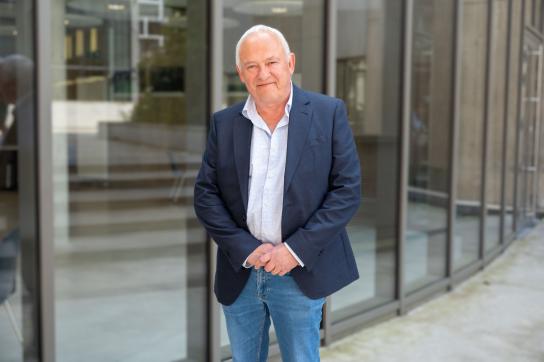
35 years between two accelerators - Serge Mathot's journey, or the art of welding history to physics
35 years between two accelerators - Serge Mathot's journey, or the art of welding history to physics
One foot in the past, the other in the future. From Etruscan granulation to PIXE analysis, Serge Mathot has built a unique career, between scientific heritage and particle accelerators. Portrait of a passionate alumnus at the crossroads of disciplines.
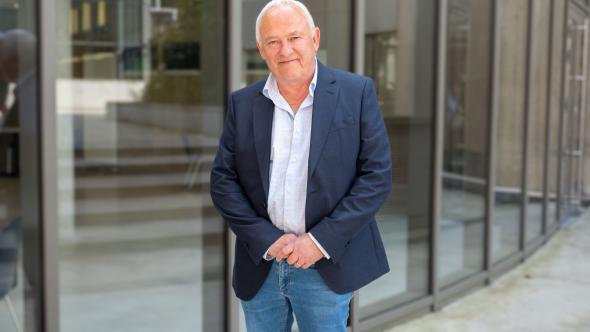
What prompted you to undertake your studies and then your doctorate in physics?
I was fascinated by the research field of one of my professors, Guy Demortier. He was working on the characterization of antique jewelry. He had found a way to differentiate by PIXE (Proton Induced X-ray Emission) analysis between antique and modern brazes that contained Cadmium, the presence of this element in antique jewelry being controversial at the time. He was interested in ancient soldering methods in general, and the granulation technique in particular. He studied them at the Laboratoire d'Analyses par Réaction Nucléaires (LARN). Brazing is an assembly operation involving the fusion of a filler metal (e.g. copper- or silver-based) without melting the base metal. This phenomenon allows a liquid metal to penetrate first by capillary action and then by diffusion at the interface of the metals to be joined, making the junction permanent after solidification. Among the jewels of antiquity, we find brazes made with incredible precision, the ancient techniques are fascinating.
Studying antique jewelry? Not what you'd expect in physics.
In fact, this was one of Namur's fields of research at the time: heritage sciences. Professor Demortier was conducting studies on a variety of jewels, but those made by the Etruscans using the so-called granulation technique, which first appeared in Eturia in the 8th century BC, are particularly incredible. It consists of depositing hundreds of tiny gold granules, up to two-tenths of a millimeter in diameter, on the surface to be decorated, and then soldering them onto the jewel without altering its fineness. So I also trained in brazing techniques and physical metallurgy.
The characterization of jewelry using LARN's particle accelerator, which enables non-destructive analysis, yields valuable information for heritage science.
This is, moreover, a current area of collaboration between the Department of Physics and the Department of History at UNamur (NDLR: notably through the ARC Phoenix project).
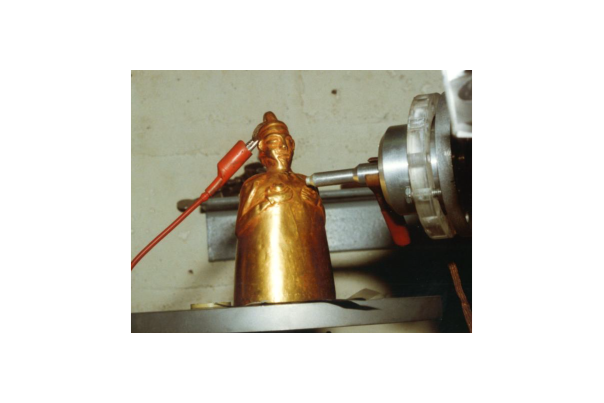
How did that help you land a job at CERN?
I applied for a position as a physicist at CERN in the field of vacuum and thin films, but was invited for the position of head of the vacuum brazing department. This department is very important for CERN as it studies methods for assembling particularly delicate and precise parts for accelerators. It also manufactures prototypes and often one-off parts. Broadly speaking, vacuum brazing is the same technique as the one we study at Namur, except that it is carried out in a vacuum chamber. This means no oxidation, perfect wetting of the brazing alloys on the parts to be assembled, and very precise temperature control to obtain very precise assemblies (we're talking microns!). I'd never heard of vacuum brazing, but my experience of Etruscan brazing, metallurgy and my background in applied physics as taught at Namur were of particular interest to the selection committee. They hired me right away!
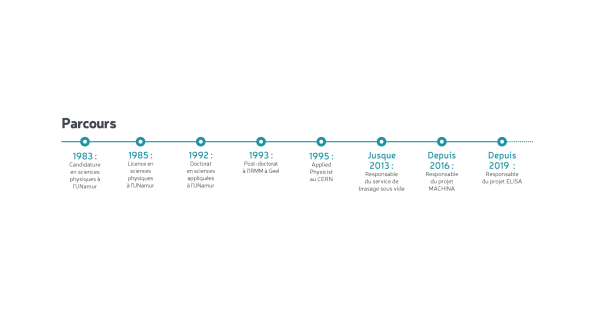
Tell us about CERN and the projects that keep you busy.
CERN is primarily known for hosting particle accelerators, including the famous LHC (Large Hadron Collider), a 27 km circumference accelerator buried some 100 m underground, which accelerates particles to 99.9999991% of the speed of light! CERN's research focuses on technology and innovation in many fields: nuclear physics, cosmic rays and cloud formation, antimatter research, the search for rare phenomena (such as the Higgs boson) and a contribution to neutrino research. It is also the birthplace of the World Wide Web (WWW). There are also projects in healthcare, medicine and partnerships with industry.
Nuclear physics at CERN is very different from what we do at UNamur with the ALTAÏS accelerator. But my training in applied physics (namuroise) has enabled me to integrate seamlessly into various research projects.
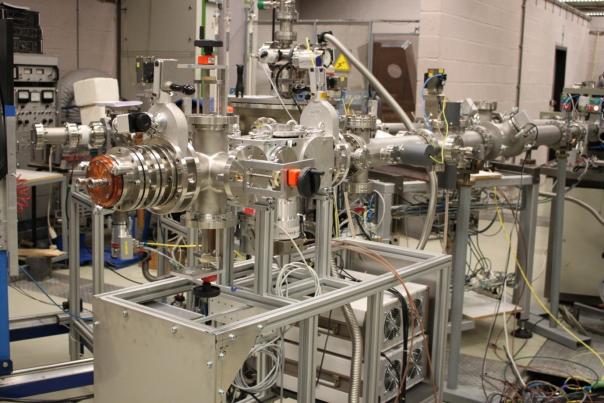
For my part, in addition to developing vacuum brazing methods, a field in which I've worked for over 20 years, I've worked a lot in parallel for the CLOUD experiment. For over 10 years, and until recently, I was its Technical Coordinator. CLOUD is a small but fascinating experiment at CERN which studies cloud formation and uses a particle beam to reproduce atomic bombardment in the laboratory in the manner of galactic radiation in our atmosphere. Using an ultra-clean 26 m³ cloud chamber, precise gas injection systems, electric fields, UV light systems and multiple detectors, we reproduce and study the Earth's atmosphere to understand whether galactic rays can indeed influence climate. This experiment calls on various fields of applied physics, and my background at UNamur has helped me once again.
I was also responsible for CERN's MACHINA project -Movable Accelerator for Cultural Heritage In situ Non-destructive Analysis - carried out in collaboration with the Istituto Nazionale di Fisica Nucleare (INFN), Florence section - Italy. Together, we have created the first portable proton accelerator for in-situ, non-destructive analysis in heritage science. MACHINA is soon to be used at the OPD (Opificio delle Pietre Dure), one of the oldest and most prestigious art restoration centers, also in Florence. The accelerator is also destined to travel to other museums or restoration centers.
Currently, I'm in charge of the ELISA (Experimental LInac for Surface Analysis) project. With ELISA, we're running a real proton accelerator for the first time in a place open to the public: the Science Gateway (SGW), CERN's new permanent exhibition center

ELISA uses the same accelerator cavity as MACHINA. The public can observe a proton beam extracted just a few centimetres from their eyes. Demonstrations are organized to show various physical phenomena, such as light production in gases or beam deflection with dipoles or quadrupoles, for example. The PIXE analysis method is also presented. ELISA is also a high-performance accelerator that we use for research projects in the field of heritage and others such as thin films, which are used extensively at CERN. The special feature is that the scientists who come to work with us do so in front of the public!
Do you have a story to tell?
I remember that in 1989, I finished typing my report for my IRSIA fellowship in the middle of the night, the day before the deadline. It had to be in by midnight the next day. There were very few computers back then, so I typed my report at the last minute on one of the secretaries' Macs. One false move and pow! all my data was gone - big panic! The next day, the secretary helped me restore my file, we printed out the document and I dropped it straight into the mailbox in Brussels, where I arrived after 11pm, in extremis, because at midnight, someone had come to close the mailbox. Fortunately, technology has come a long way since then...

And I can't resist sharing two images 35 years apart!
To the left, a Gold statuette (Egypt), c. 2000 BC, analyzed at LARN - UNamur (photo 1990) and to the right, a copy (in Brass) of the Dame de Brassempouy, analyzed with ELISA - CERN (2025).
The "photographer" is the same, so we've come full circle...
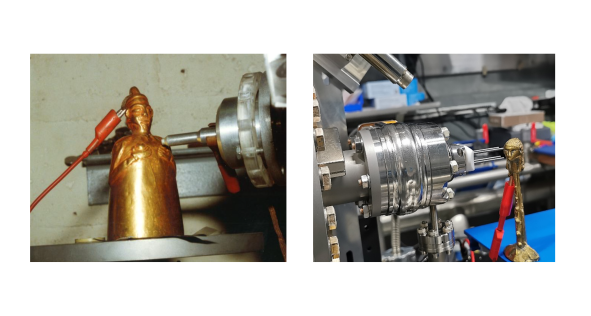
The proximity between teaching and research inspires and questions. This enables graduate students to move into multiple areas of working life.
Come and study in Namur!
Serge Mathot (May 2025) - Interview by Karin Derochette
Further information
- The CERN accelerators complex
- The Science Portal, CERN's public education and communication center
- Newsroom - June 2025 | The Departement of physics hosts a delegation from CERN
- Newsroom and Omalius Alumni article - September 2022 | François Briard
CERN - the science portal
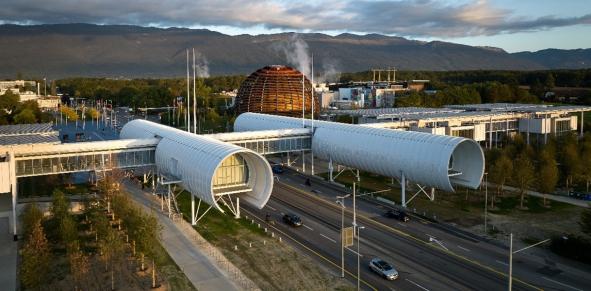
This article is taken from the "Alumni" section of Omalius magazine #38 (September 2025).
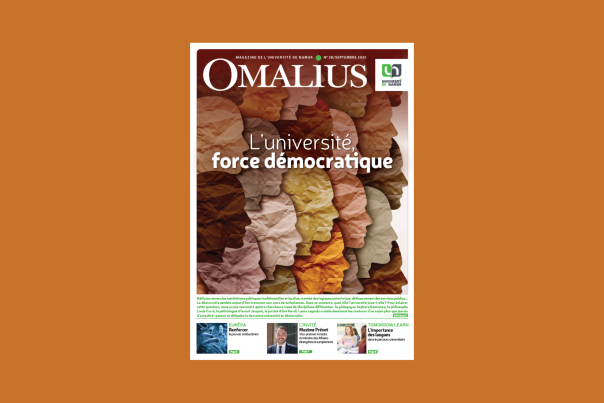
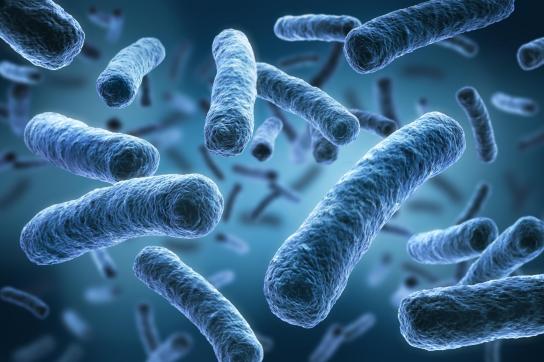
DCF, a molecular weapon against bacterial defenses
DCF, a molecular weapon against bacterial defenses
At a time when bacterial resistance to antibiotics is a public health problem, Professor Stéphane Vincent's team is currently developing dynamic constitutional frameworks (Dynamic Constitutional Frameworks, DCF): a molecular system that would be able to break down certain resistances and thus deliver antibiotics as close as possible to pathogens.
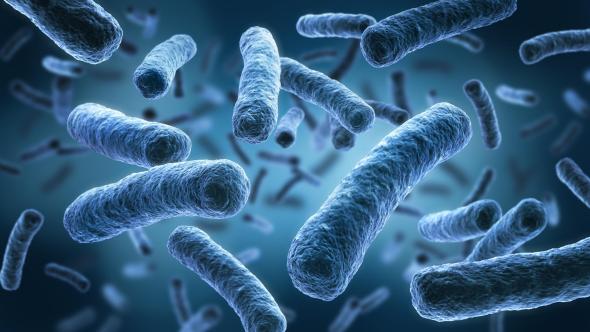
Scientific discoveries are like great stories: they often begin with an encounter. Nearly 20 years ago, Professor Stéphane Vincent of UNamur's Laboratoire de Chimie Bio-Organique, then a young sugar chemist, was in search of something new. During a post-doctorate in Strasbourg, France, in the laboratory of Jean-Marie Lehn, winner of the 1987 Nobel Prize in Chemistry and a specialist in supramolecular chemistry, he befriended another post-doctoral fellow: the Romanian Mihail Barboiu, now a CNRS researcher in Montpellier.
."Research carried out between Montpellier and Strasbourg has given rise to what we call Dynamic Constitutional Frameworks", reveals Stéphane Vincent. "These are molecules that are constantly assembling and disassembling, which gives them interesting properties. Weakly toxic to animal and human cells, DCFs can interact with essential cell components, such as proteins or DNA."
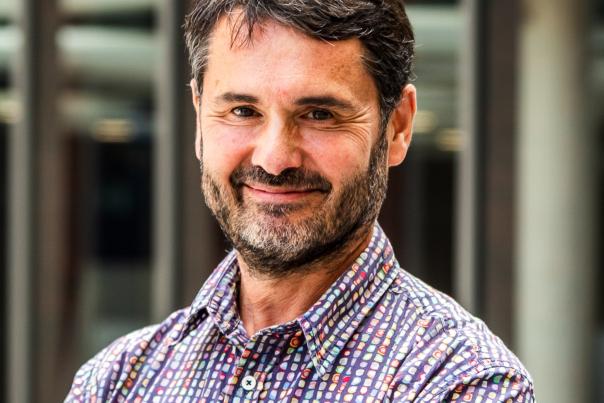
Soon before the Covid-19 pandemic, at a scientific congress, Mihail Barboiu showed Stéphane Vincent the results of his experiments. "He was using DCFs as a kind of transporter, to bring genes (DNA or RNA fragments) into a cell", recalls the chemist. "I then realized that DCFs were positively-charged molecules and readily adapted to DNA, which is negatively-charged. This gave me the idea of using them against bacteria, in the same way as certain antibiotics, which are also positively charged."
An antibacterial turnaround
The two researchers then established an initial research project, with a thesis funded in cotutelle by UNamur, which culminated in 2021 in the publication of the first results showing the antibacterial activity of DCFs. "At the time, I was already working on antibacterial approaches, particularly against Pseudomonas aeruginosa, a major pathogen that forms biofilms", explains Stéphane Vincent.
To combat antiseptics and antibiotics, bacteria proceed in several ways. In addition to developing mechanisms to block the functioning of antibiotics, they are able to aggregate or dock themselves to a surface, for example that of a medical implant, and cover themselves with a complex tangle of all sorts of molecules. The latter, known as biofilm, protects the bacteria from external aggression. These biofilms are a major public health problem, as they enable bacteria to survive even the most powerful antibiotics and are notably the cause of nosocomial diseases, infections contracted during a stay in a healthcare establishment.
"We have shown that certain DCFs are both capable of inhibiting biofilm production, but also of weakening them, thereby exposing bacteria to their environment", summarizes Stéphane Vincent.
The TADAM project, a European alliance!
Bolstered by these results and thanks to C2W, a "very competitive"European program that funds post-doctorates, Stéphane Vincent invited Dmytro Strilets, a Ukrainian chemist who had just completed his thesis under the supervision of Mihail Barboiu, to work in his laboratory on DCFs. The project, called TADAM and carried out in collaboration with researchers Tom Coenye of UGent and Charles Van der Henst of the VUB, then focused on the antibacterial and antibiofilm potential of DCFs against Acinetobacter baumannii, a bacterium which, along with Pseudomonas aeruginosa, is on the list of pathogens of greatest concern defined by the World Health Organization (WHO).
The TADAM project is based on an ingenious assembly: DCFs are associated with special molecules known as pillarenes. The latter form a sort of cage around a proven antibiotic molecule, levofloxacin, thus improving its bioavailability and stability. The DCFs then have the role of inhibiting and disintegrating the biofilm, to enable the pillarenes to deliver their antibiotic directly to the bacteria thus exposed.
The results obtained by Stéphane Vincent's team are spectacular: the DCF-pillararene-antibiotic assembly is up to four times more effective than the antibiotic used alone! Noting that little work had yet been done on the antibiotic effect of these new molecules, the researchers decided to protect their invention by filing a joint patent, before going any further.
For everything still remains to be done. Firstly, because despite more than convincing results, how the assembly works is still obscure. "All the study of the mechanism of action has yet to be done, says Stéphane Vincent. "How is the antibiotic arranged in the pillararene cage? Why do DCFs have antibiofilm activity? How do DCFs and pillararenes fit together? All these questions are important, not only to understand our results, but also to eventually develop new generations of molecules."
And on this point, Stéphane Vincent wants to be particularly cautious. "We all dream, of course, of a universal molecule that will work on all pathogens, but we have to be humble, he pauses. "I've been working with biologists for many years, and I know that biological reality is infinitely more complex than our laboratory conditions. But it's because our results are so encouraging that we must persevere down this path."
The chemist already has several leads: "We're going to test the molecules on bacteria"circulating"suspended in a liquid, which behave very differently. And then we're also going to work on clinical isolates of pathogenic bacteria, to get a little closer to the real conditions under which these biofilms form."
Dmytro Strilets has just received a Chargé de Recherche mandate from the FNRS to develop second-generation DCFs and study their mode of action. The TADAM project has received funding from the University of Namur and the European Union's Horizon 2020 research and innovation program under Marie Skłodowska-Curie grant agreement n°101034383.
This article is taken from the "Eureka" section of Omalius magazine #38 (September 2025).

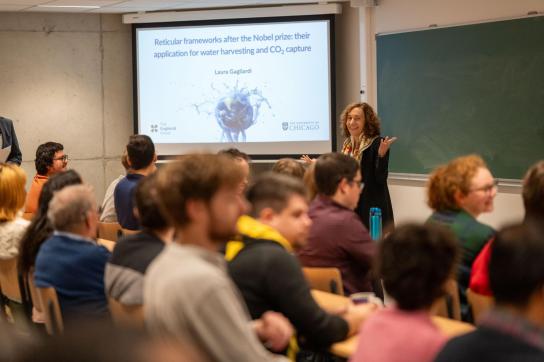
Laura Gagliardi visits the UNamur in the framework of the prestigious Solvay/Syensqo Chair in Chemistry
Laura Gagliardi visits the UNamur in the framework of the prestigious Solvay/Syensqo Chair in Chemistry
Laura Gagliardi is a renowned international researcher at the University of Chicago, recognized for her pioneering contributions to theoretical and computational chemistry, particularly in the study of reticular materials such as metal–organic frameworks (MOFs). The Solvay/Syensqo Chair in Chemistry honors chemists who have made exceptional advances in their fields. As part of this distinction, Professor Gagliardi delivered a series of lectures at several Belgian universities, including a seminar at the University of Namur, Department of Chemistry.
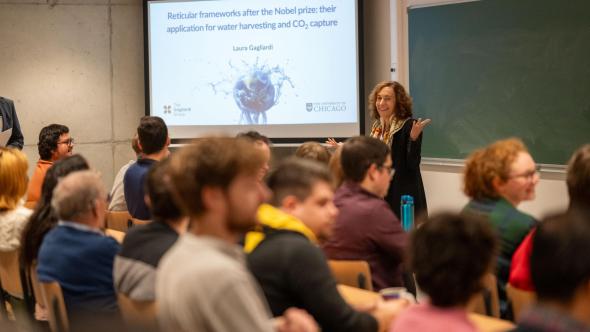
Your research ranges from fundamental to applied chemistry. Can you explain what you do?
My background is in fundamental chemistry and physics—the study of the basic principles that govern matter, from atoms and molecules to the chemical bonds that connect them. During my Ph.D., I focused on developing theoretical concepts and converting them into computer codes, which required a lot of mathematics, rigor, and careful methodology.
I have always been fascinated by physical and theoretical chemistry. Synthetic chemistry in the lab can sometimes be compared to cooking—you follow a recipe and observe the results. My husband is an organic chemist and also the cook in our family; he always tells me to go play the piano while he’s in the kitchen! I’m not allowed anywhere near it. 😊
What truly fascinates me is understanding why things work in a certain way, not just that they work. My group performs computer simulations that allow us to probe reaction mechanisms at the molecular level. These simulations help us explain experimental observations, make quantitative predictions, and even design new molecular systems and materials that can later be tested and refined in the laboratory.
Currently, a large portion of my research focuses on metal–organic frameworks, or MOFs—materials made of metal ions/clusters linked by organic molecules. MOFs are exciting because of their enormous surface areas and highly tunable pore structures, which make them ideal for a wide range of applications. We are particularly interested in using MOFs to address climate change challenges, for example, by capturing carbon dioxide, storing hydrogen, and purifying water. Beyond these, MOFs are also being explored for catalysis, drug delivery, and even as sensors for detecting pollutants and biomolecules.
The Nobel Prize in Chemistry has just been awarded to three renowned scientists: S. Kitagawa, O. M. Yaghi and the late R. Robson for their work on metal-organic structures (MOFs). They have created molecular constructs with large spaces through which gases and other chemicals can flow: to collect water from desert air, capture carbon dioxide, store toxic gases or catalyze chemical reactions.
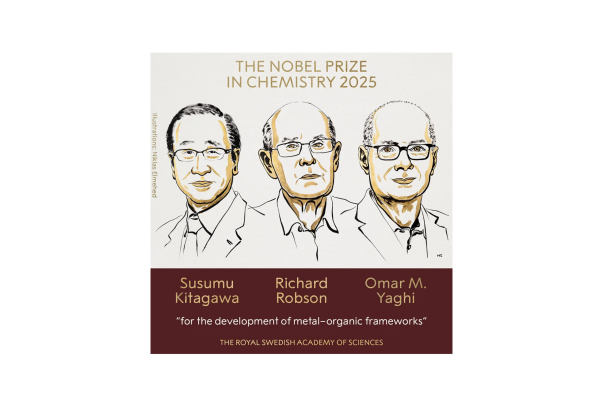
You're a scientific leader in the field of computational chemistry. How did you come to choose this path?
I grew up in Italy, in a very supportive environment. My mother was a mathematics teacher, and my father was an engineer, so I was surrounded by numbers, logic, and curiosity from an early age. I was always drawn to mathematics, physics, and chemistry, and my parents encouraged me to be ambitious and to pursue excellence in whatever I did. Their support and belief in me gave me the confidence to follow my curiosity wherever it led.
During your education, did you encounter difficulties linked to the fact that you are a woman?
Of course. At that time, society was still very stereotyped and biased. My grandfather, who admired my determination, used to say I would become a high school headmaster—that was already considered quite an achievement for a woman then! My professors were kind and encouraging, but when they saw my academic performance, they assumed I would become a high school teacher, which was considered the highest position most people could imagine for a woman in science. Nobody would have said “astronaut” or “CEO of a large company”—those roles were thought to be reserved for men. Things turned out differently. By the time I was doing my Ph.D., my parents were proud of me, though I don’t think they expected me to have this kind of career. And I am truly passionate about my job—it never feels routine.
Do you have a message for the young generation?
The most important thing is to find your passion. You will spend a large part of your life working, so you might as well do something you genuinely love. When you love what you do, you naturally find the strength and motivation to persevere.
I like to quote the Italian author Primo Levi, who wrote in the Wrench: “Finding a job you like is the closest approximation to happiness in this world.” As a woman—and even though things have improved—you still have to work very hard to demonstrate your worth. I deeply believe in excellence, and I value it when I see it in others, regardless of gender. Excellence speaks for itself.
I also believe that family, friends, and mentors are indispensable sources of inspiration. You need role models and supportive figures to help you grow, stay passionate, and strive for excellence. We are fortunate to live in a privileged environment where many opportunities are within reach.
My advice is to use that privilege to make a difference—by finding your passion and pursuing it wholeheartedly.
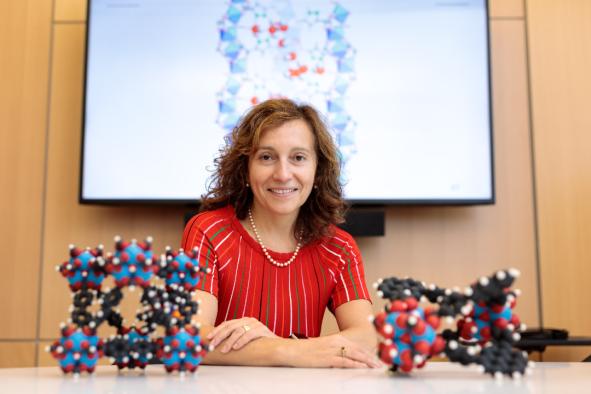
Laura Gagliardi - Biography
Laura Gagliardi is a professor at the University of Chicago, United States of America.
Picture credit - University of Chicago
After her scholarship in Bologna, Italy, a post-doctoral position in Cambridge, England, she began her independent academic career in Palermo, Italy, then in Geneva, Switzerland. In 2009, she moved to the United States where she was a professor at the University of Minnesota. She remained there until her move to the University of Chicago in 2020. She is the Richard and Kathy Leventhal Professor at the University of Chicago with a joint appointment at the Department of Chemistry and the Pritzker School of Molecular Engineering.
In addition to her dedication to science, Laura is a strong advocate for women in science, technology, engineering, and mathematics.
The Syensqo 2025 Chair in Chemistry at the Solvay International Institutes
Laura Gagliardi was awarded this prestigious Solvay chair in Chemistry for her groundbreaking work on electronic structure methods for complex chemical systems, which highlights her leadership and impact on the world of chemistry.
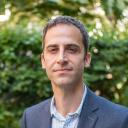
Laura Gagliardi's visit to the University of Namur on October 22, 2025, was an excellent opportunity for undergraduate, master, and doctoral students, as well as postdoctoral researchers from the chemistry and physics departments working in the field of computational chemistry and numerical simulations of functional materials, to meet and exchange ideas with a world-renowned figure.
Chemistry and physics research at UNamur
At the University of Namur, their research is conducted at the Namur Institute for Structured Matter (NISM) and is dedicated to the development and application of new computational methodologies to characterize and understand the properties of functional materials for applications in the fields of nonlinear optics, energy storage, catalysis, organic electronics, photochemistry, and photophysics.
Contacts: benoit.champagne@unamur.be - vincent.liegeois@unamur.be - yoann.olivier@unamur.be

10 years of UNamur - STÛV collaboration: a lever for innovation, attractiveness and excellence
10 years of UNamur - STÛV collaboration: a lever for innovation, attractiveness and excellence
The University of Namur and STÛV, a Namur-based company specializing in wood and pellet heating solutions, are celebrating ten years of fruitful collaboration. This partnership illustrates the importance of synergies between academia and industry to improve competitiveness and meet environmental challenges.

For over 30 years, UNamur, via its Chemistry of Inorganic Materials Laboratory (CMI) headed by Professor Bao-Lian Su, has excelled in fundamental research into catalytic solutions capable of "cleaning" air and water. In 2014, STÛV approached this expertise to design a sustainable, low-cost smoke purification system for wood-burning stoves, in anticipation of the tightening of European standards.
The R-PUR project: a decisive first step
From this meeting was born the R-PUR applied research project, funded by the Walloon Region and the European Union as part of the Beware program, led by Tarek Barakat (UNamur - CMI). Between 2014 and 2017, an innovative catalytic filter was thus developed within the laboratory, in close collaboration with STÛV.
From 2018 to 2024, the technologies patented by STÛV and UNamur and the pollutant measurement equipment were gradually transferred to STÛV, at the same time as Win4Spin-off and Proof of Concept funding enabled technological and commercial maturities to be increased to meet market needs. These steps led to laying the foundations for a new Business Unit at STÛV, with the hiring of Tarek Barakat as Project Manager, and raising investments to produce the catalytic filters.
What about tomorrow? Towards zero-emission combustion
The UNamur-STÛV collaboration continues today with the Win4Doc (doctorate in business) DeCOVskite project, led by PhD student Louis Garin (UNamur - CMI) and supervised by Tarek Barakat. Objectives:
- Develop a second generation of catalysts to completely reduce fine particle emissions.
- Limit the use of precious metals.
- Sustain biomass combustion and make STÛV the world leader in zero-emission stoves.
A winning partnership for the region
This collaboration has enabled:
- The acquisition and transfer of know-how and equipment between UNamur and STÛV to validate results under industrial conditions.
- The organization of multidisciplinary workshops, such as the one on October 14, promoting the sharing of expertise around biomass combustion and sustainable development.
Success-Story: interviews and testimonials
At the end of October, members of UNamur and STÛV came together to take part in a workshop organized by UNamur's Research Administration and STÛV. The aim? To highlight the benefits of collaborative research between companies and universities on subjects ranging from energy, the environment, profitability, ethics and regulation to sustainable development. The two partners discussed their collaboration, expertise and development prospects.
Discover the details of this success story in this video :


35 years between two accelerators - Serge Mathot's journey, or the art of welding history to physics
35 years between two accelerators - Serge Mathot's journey, or the art of welding history to physics
One foot in the past, the other in the future. From Etruscan granulation to PIXE analysis, Serge Mathot has built a unique career, between scientific heritage and particle accelerators. Portrait of a passionate alumnus at the crossroads of disciplines.

What prompted you to undertake your studies and then your doctorate in physics?
I was fascinated by the research field of one of my professors, Guy Demortier. He was working on the characterization of antique jewelry. He had found a way to differentiate by PIXE (Proton Induced X-ray Emission) analysis between antique and modern brazes that contained Cadmium, the presence of this element in antique jewelry being controversial at the time. He was interested in ancient soldering methods in general, and the granulation technique in particular. He studied them at the Laboratoire d'Analyses par Réaction Nucléaires (LARN). Brazing is an assembly operation involving the fusion of a filler metal (e.g. copper- or silver-based) without melting the base metal. This phenomenon allows a liquid metal to penetrate first by capillary action and then by diffusion at the interface of the metals to be joined, making the junction permanent after solidification. Among the jewels of antiquity, we find brazes made with incredible precision, the ancient techniques are fascinating.
Studying antique jewelry? Not what you'd expect in physics.
In fact, this was one of Namur's fields of research at the time: heritage sciences. Professor Demortier was conducting studies on a variety of jewels, but those made by the Etruscans using the so-called granulation technique, which first appeared in Eturia in the 8th century BC, are particularly incredible. It consists of depositing hundreds of tiny gold granules, up to two-tenths of a millimeter in diameter, on the surface to be decorated, and then soldering them onto the jewel without altering its fineness. So I also trained in brazing techniques and physical metallurgy.
The characterization of jewelry using LARN's particle accelerator, which enables non-destructive analysis, yields valuable information for heritage science.
This is, moreover, a current area of collaboration between the Department of Physics and the Department of History at UNamur (NDLR: notably through the ARC Phoenix project).

How did that help you land a job at CERN?
I applied for a position as a physicist at CERN in the field of vacuum and thin films, but was invited for the position of head of the vacuum brazing department. This department is very important for CERN as it studies methods for assembling particularly delicate and precise parts for accelerators. It also manufactures prototypes and often one-off parts. Broadly speaking, vacuum brazing is the same technique as the one we study at Namur, except that it is carried out in a vacuum chamber. This means no oxidation, perfect wetting of the brazing alloys on the parts to be assembled, and very precise temperature control to obtain very precise assemblies (we're talking microns!). I'd never heard of vacuum brazing, but my experience of Etruscan brazing, metallurgy and my background in applied physics as taught at Namur were of particular interest to the selection committee. They hired me right away!

Tell us about CERN and the projects that keep you busy.
CERN is primarily known for hosting particle accelerators, including the famous LHC (Large Hadron Collider), a 27 km circumference accelerator buried some 100 m underground, which accelerates particles to 99.9999991% of the speed of light! CERN's research focuses on technology and innovation in many fields: nuclear physics, cosmic rays and cloud formation, antimatter research, the search for rare phenomena (such as the Higgs boson) and a contribution to neutrino research. It is also the birthplace of the World Wide Web (WWW). There are also projects in healthcare, medicine and partnerships with industry.
Nuclear physics at CERN is very different from what we do at UNamur with the ALTAÏS accelerator. But my training in applied physics (namuroise) has enabled me to integrate seamlessly into various research projects.

For my part, in addition to developing vacuum brazing methods, a field in which I've worked for over 20 years, I've worked a lot in parallel for the CLOUD experiment. For over 10 years, and until recently, I was its Technical Coordinator. CLOUD is a small but fascinating experiment at CERN which studies cloud formation and uses a particle beam to reproduce atomic bombardment in the laboratory in the manner of galactic radiation in our atmosphere. Using an ultra-clean 26 m³ cloud chamber, precise gas injection systems, electric fields, UV light systems and multiple detectors, we reproduce and study the Earth's atmosphere to understand whether galactic rays can indeed influence climate. This experiment calls on various fields of applied physics, and my background at UNamur has helped me once again.
I was also responsible for CERN's MACHINA project -Movable Accelerator for Cultural Heritage In situ Non-destructive Analysis - carried out in collaboration with the Istituto Nazionale di Fisica Nucleare (INFN), Florence section - Italy. Together, we have created the first portable proton accelerator for in-situ, non-destructive analysis in heritage science. MACHINA is soon to be used at the OPD (Opificio delle Pietre Dure), one of the oldest and most prestigious art restoration centers, also in Florence. The accelerator is also destined to travel to other museums or restoration centers.
Currently, I'm in charge of the ELISA (Experimental LInac for Surface Analysis) project. With ELISA, we're running a real proton accelerator for the first time in a place open to the public: the Science Gateway (SGW), CERN's new permanent exhibition center

ELISA uses the same accelerator cavity as MACHINA. The public can observe a proton beam extracted just a few centimetres from their eyes. Demonstrations are organized to show various physical phenomena, such as light production in gases or beam deflection with dipoles or quadrupoles, for example. The PIXE analysis method is also presented. ELISA is also a high-performance accelerator that we use for research projects in the field of heritage and others such as thin films, which are used extensively at CERN. The special feature is that the scientists who come to work with us do so in front of the public!
Do you have a story to tell?
I remember that in 1989, I finished typing my report for my IRSIA fellowship in the middle of the night, the day before the deadline. It had to be in by midnight the next day. There were very few computers back then, so I typed my report at the last minute on one of the secretaries' Macs. One false move and pow! all my data was gone - big panic! The next day, the secretary helped me restore my file, we printed out the document and I dropped it straight into the mailbox in Brussels, where I arrived after 11pm, in extremis, because at midnight, someone had come to close the mailbox. Fortunately, technology has come a long way since then...

And I can't resist sharing two images 35 years apart!
To the left, a Gold statuette (Egypt), c. 2000 BC, analyzed at LARN - UNamur (photo 1990) and to the right, a copy (in Brass) of the Dame de Brassempouy, analyzed with ELISA - CERN (2025).
The "photographer" is the same, so we've come full circle...

The proximity between teaching and research inspires and questions. This enables graduate students to move into multiple areas of working life.
Come and study in Namur!
Serge Mathot (May 2025) - Interview by Karin Derochette
Further information
- The CERN accelerators complex
- The Science Portal, CERN's public education and communication center
- Newsroom - June 2025 | The Departement of physics hosts a delegation from CERN
- Newsroom and Omalius Alumni article - September 2022 | François Briard
CERN - the science portal

This article is taken from the "Alumni" section of Omalius magazine #38 (September 2025).


DCF, a molecular weapon against bacterial defenses
DCF, a molecular weapon against bacterial defenses
At a time when bacterial resistance to antibiotics is a public health problem, Professor Stéphane Vincent's team is currently developing dynamic constitutional frameworks (Dynamic Constitutional Frameworks, DCF): a molecular system that would be able to break down certain resistances and thus deliver antibiotics as close as possible to pathogens.

Scientific discoveries are like great stories: they often begin with an encounter. Nearly 20 years ago, Professor Stéphane Vincent of UNamur's Laboratoire de Chimie Bio-Organique, then a young sugar chemist, was in search of something new. During a post-doctorate in Strasbourg, France, in the laboratory of Jean-Marie Lehn, winner of the 1987 Nobel Prize in Chemistry and a specialist in supramolecular chemistry, he befriended another post-doctoral fellow: the Romanian Mihail Barboiu, now a CNRS researcher in Montpellier.
."Research carried out between Montpellier and Strasbourg has given rise to what we call Dynamic Constitutional Frameworks", reveals Stéphane Vincent. "These are molecules that are constantly assembling and disassembling, which gives them interesting properties. Weakly toxic to animal and human cells, DCFs can interact with essential cell components, such as proteins or DNA."

Soon before the Covid-19 pandemic, at a scientific congress, Mihail Barboiu showed Stéphane Vincent the results of his experiments. "He was using DCFs as a kind of transporter, to bring genes (DNA or RNA fragments) into a cell", recalls the chemist. "I then realized that DCFs were positively-charged molecules and readily adapted to DNA, which is negatively-charged. This gave me the idea of using them against bacteria, in the same way as certain antibiotics, which are also positively charged."
An antibacterial turnaround
The two researchers then established an initial research project, with a thesis funded in cotutelle by UNamur, which culminated in 2021 in the publication of the first results showing the antibacterial activity of DCFs. "At the time, I was already working on antibacterial approaches, particularly against Pseudomonas aeruginosa, a major pathogen that forms biofilms", explains Stéphane Vincent.
To combat antiseptics and antibiotics, bacteria proceed in several ways. In addition to developing mechanisms to block the functioning of antibiotics, they are able to aggregate or dock themselves to a surface, for example that of a medical implant, and cover themselves with a complex tangle of all sorts of molecules. The latter, known as biofilm, protects the bacteria from external aggression. These biofilms are a major public health problem, as they enable bacteria to survive even the most powerful antibiotics and are notably the cause of nosocomial diseases, infections contracted during a stay in a healthcare establishment.
"We have shown that certain DCFs are both capable of inhibiting biofilm production, but also of weakening them, thereby exposing bacteria to their environment", summarizes Stéphane Vincent.
The TADAM project, a European alliance!
Bolstered by these results and thanks to C2W, a "very competitive"European program that funds post-doctorates, Stéphane Vincent invited Dmytro Strilets, a Ukrainian chemist who had just completed his thesis under the supervision of Mihail Barboiu, to work in his laboratory on DCFs. The project, called TADAM and carried out in collaboration with researchers Tom Coenye of UGent and Charles Van der Henst of the VUB, then focused on the antibacterial and antibiofilm potential of DCFs against Acinetobacter baumannii, a bacterium which, along with Pseudomonas aeruginosa, is on the list of pathogens of greatest concern defined by the World Health Organization (WHO).
The TADAM project is based on an ingenious assembly: DCFs are associated with special molecules known as pillarenes. The latter form a sort of cage around a proven antibiotic molecule, levofloxacin, thus improving its bioavailability and stability. The DCFs then have the role of inhibiting and disintegrating the biofilm, to enable the pillarenes to deliver their antibiotic directly to the bacteria thus exposed.
The results obtained by Stéphane Vincent's team are spectacular: the DCF-pillararene-antibiotic assembly is up to four times more effective than the antibiotic used alone! Noting that little work had yet been done on the antibiotic effect of these new molecules, the researchers decided to protect their invention by filing a joint patent, before going any further.
For everything still remains to be done. Firstly, because despite more than convincing results, how the assembly works is still obscure. "All the study of the mechanism of action has yet to be done, says Stéphane Vincent. "How is the antibiotic arranged in the pillararene cage? Why do DCFs have antibiofilm activity? How do DCFs and pillararenes fit together? All these questions are important, not only to understand our results, but also to eventually develop new generations of molecules."
And on this point, Stéphane Vincent wants to be particularly cautious. "We all dream, of course, of a universal molecule that will work on all pathogens, but we have to be humble, he pauses. "I've been working with biologists for many years, and I know that biological reality is infinitely more complex than our laboratory conditions. But it's because our results are so encouraging that we must persevere down this path."
The chemist already has several leads: "We're going to test the molecules on bacteria"circulating"suspended in a liquid, which behave very differently. And then we're also going to work on clinical isolates of pathogenic bacteria, to get a little closer to the real conditions under which these biofilms form."
Dmytro Strilets has just received a Chargé de Recherche mandate from the FNRS to develop second-generation DCFs and study their mode of action. The TADAM project has received funding from the University of Namur and the European Union's Horizon 2020 research and innovation program under Marie Skłodowska-Curie grant agreement n°101034383.
This article is taken from the "Eureka" section of Omalius magazine #38 (September 2025).


Laura Gagliardi visits the UNamur in the framework of the prestigious Solvay/Syensqo Chair in Chemistry
Laura Gagliardi visits the UNamur in the framework of the prestigious Solvay/Syensqo Chair in Chemistry
Laura Gagliardi is a renowned international researcher at the University of Chicago, recognized for her pioneering contributions to theoretical and computational chemistry, particularly in the study of reticular materials such as metal–organic frameworks (MOFs). The Solvay/Syensqo Chair in Chemistry honors chemists who have made exceptional advances in their fields. As part of this distinction, Professor Gagliardi delivered a series of lectures at several Belgian universities, including a seminar at the University of Namur, Department of Chemistry.

Your research ranges from fundamental to applied chemistry. Can you explain what you do?
My background is in fundamental chemistry and physics—the study of the basic principles that govern matter, from atoms and molecules to the chemical bonds that connect them. During my Ph.D., I focused on developing theoretical concepts and converting them into computer codes, which required a lot of mathematics, rigor, and careful methodology.
I have always been fascinated by physical and theoretical chemistry. Synthetic chemistry in the lab can sometimes be compared to cooking—you follow a recipe and observe the results. My husband is an organic chemist and also the cook in our family; he always tells me to go play the piano while he’s in the kitchen! I’m not allowed anywhere near it. 😊
What truly fascinates me is understanding why things work in a certain way, not just that they work. My group performs computer simulations that allow us to probe reaction mechanisms at the molecular level. These simulations help us explain experimental observations, make quantitative predictions, and even design new molecular systems and materials that can later be tested and refined in the laboratory.
Currently, a large portion of my research focuses on metal–organic frameworks, or MOFs—materials made of metal ions/clusters linked by organic molecules. MOFs are exciting because of their enormous surface areas and highly tunable pore structures, which make them ideal for a wide range of applications. We are particularly interested in using MOFs to address climate change challenges, for example, by capturing carbon dioxide, storing hydrogen, and purifying water. Beyond these, MOFs are also being explored for catalysis, drug delivery, and even as sensors for detecting pollutants and biomolecules.
The Nobel Prize in Chemistry has just been awarded to three renowned scientists: S. Kitagawa, O. M. Yaghi and the late R. Robson for their work on metal-organic structures (MOFs). They have created molecular constructs with large spaces through which gases and other chemicals can flow: to collect water from desert air, capture carbon dioxide, store toxic gases or catalyze chemical reactions.

You're a scientific leader in the field of computational chemistry. How did you come to choose this path?
I grew up in Italy, in a very supportive environment. My mother was a mathematics teacher, and my father was an engineer, so I was surrounded by numbers, logic, and curiosity from an early age. I was always drawn to mathematics, physics, and chemistry, and my parents encouraged me to be ambitious and to pursue excellence in whatever I did. Their support and belief in me gave me the confidence to follow my curiosity wherever it led.
During your education, did you encounter difficulties linked to the fact that you are a woman?
Of course. At that time, society was still very stereotyped and biased. My grandfather, who admired my determination, used to say I would become a high school headmaster—that was already considered quite an achievement for a woman then! My professors were kind and encouraging, but when they saw my academic performance, they assumed I would become a high school teacher, which was considered the highest position most people could imagine for a woman in science. Nobody would have said “astronaut” or “CEO of a large company”—those roles were thought to be reserved for men. Things turned out differently. By the time I was doing my Ph.D., my parents were proud of me, though I don’t think they expected me to have this kind of career. And I am truly passionate about my job—it never feels routine.
Do you have a message for the young generation?
The most important thing is to find your passion. You will spend a large part of your life working, so you might as well do something you genuinely love. When you love what you do, you naturally find the strength and motivation to persevere.
I like to quote the Italian author Primo Levi, who wrote in the Wrench: “Finding a job you like is the closest approximation to happiness in this world.” As a woman—and even though things have improved—you still have to work very hard to demonstrate your worth. I deeply believe in excellence, and I value it when I see it in others, regardless of gender. Excellence speaks for itself.
I also believe that family, friends, and mentors are indispensable sources of inspiration. You need role models and supportive figures to help you grow, stay passionate, and strive for excellence. We are fortunate to live in a privileged environment where many opportunities are within reach.
My advice is to use that privilege to make a difference—by finding your passion and pursuing it wholeheartedly.

Laura Gagliardi - Biography
Laura Gagliardi is a professor at the University of Chicago, United States of America.
Picture credit - University of Chicago
After her scholarship in Bologna, Italy, a post-doctoral position in Cambridge, England, she began her independent academic career in Palermo, Italy, then in Geneva, Switzerland. In 2009, she moved to the United States where she was a professor at the University of Minnesota. She remained there until her move to the University of Chicago in 2020. She is the Richard and Kathy Leventhal Professor at the University of Chicago with a joint appointment at the Department of Chemistry and the Pritzker School of Molecular Engineering.
In addition to her dedication to science, Laura is a strong advocate for women in science, technology, engineering, and mathematics.
The Syensqo 2025 Chair in Chemistry at the Solvay International Institutes
Laura Gagliardi was awarded this prestigious Solvay chair in Chemistry for her groundbreaking work on electronic structure methods for complex chemical systems, which highlights her leadership and impact on the world of chemistry.

Laura Gagliardi's visit to the University of Namur on October 22, 2025, was an excellent opportunity for undergraduate, master, and doctoral students, as well as postdoctoral researchers from the chemistry and physics departments working in the field of computational chemistry and numerical simulations of functional materials, to meet and exchange ideas with a world-renowned figure.
Chemistry and physics research at UNamur
At the University of Namur, their research is conducted at the Namur Institute for Structured Matter (NISM) and is dedicated to the development and application of new computational methodologies to characterize and understand the properties of functional materials for applications in the fields of nonlinear optics, energy storage, catalysis, organic electronics, photochemistry, and photophysics.
Contacts: benoit.champagne@unamur.be - vincent.liegeois@unamur.be - yoann.olivier@unamur.be


